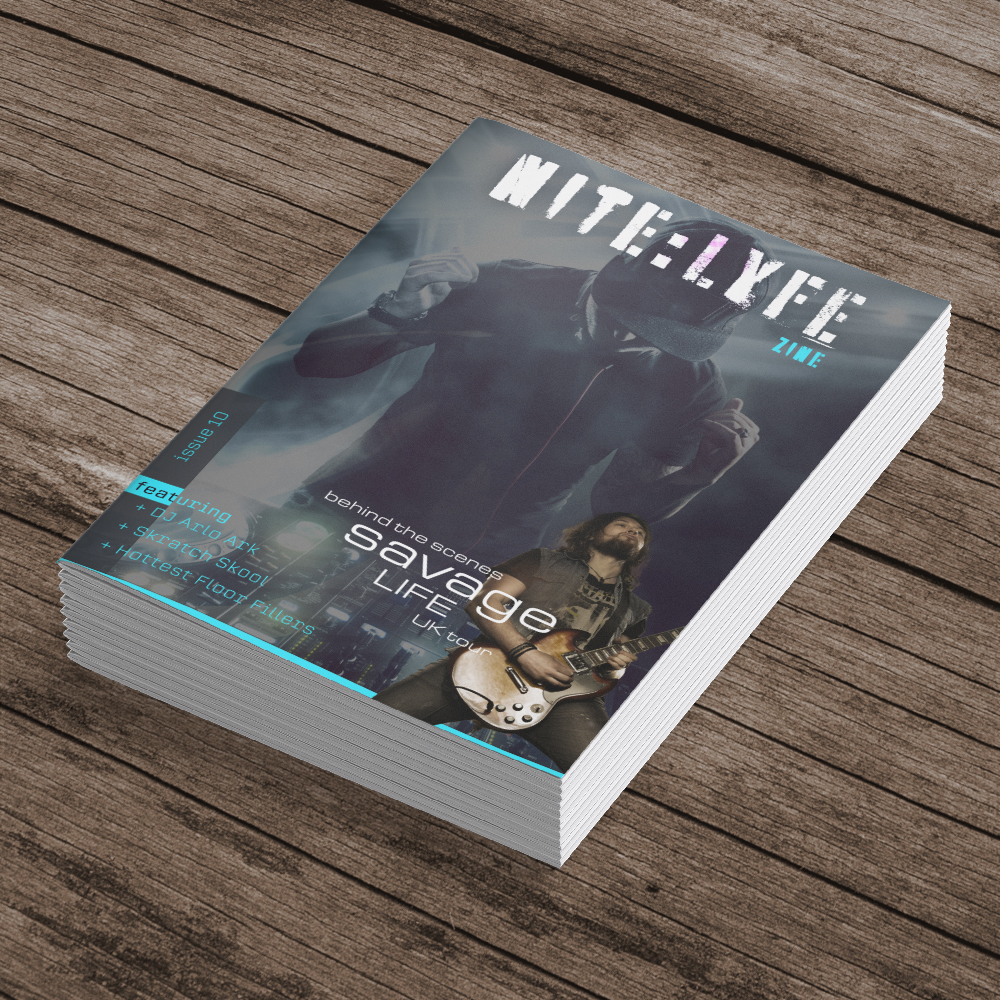Introduction: The Return of Retro Print
In today’s digital world, where screens seem to have taken over almost every part of life, there’s something genuinely refreshing about holding a piece of art or writing in your hands. And zines those quirky, DIY booklets are making a huge comeback. These handmade booklets have a rich history as a means of self-expression and community, offering a physical, creative alternative to the endless scrolling and instant content we’re all used to. They’re personal, unique, and full of character essentially, everything digital often isn’t.
Whether you’re new to the idea of zines, rekindling an old love for these paper gems, or simply looking to print a zine that speaks to your creative side, this guide will walk you through the essentials: the story behind zines, why they’re coming back, and how you can make one yourself. Let’s explore why zine-style booklets are becoming popular again and discover just how fun (and freeing) it can be to create one of your own.

What is a ‘Zine? A Brief History and Evolution
So, what exactly is a ‘zine? Essentially, it’s a self-published booklet, typically produced on a small scale, created by individuals or groups who want to share their ideas, art, or stories. Zines took root in the punk scenes of the 70s and 80s as a way for people to express themselves outside of mainstream media. Fans of punk music, sci-fi, and other underground interests saw zines as a chance to share opinions, showcase art, and foster a sense of community. They were raw, often rough around the edges, and completely independent.
Over the decades, zines have evolved, taking on all sorts of themes—activism, poetry, photography, you name it. Different subcultures adopted them as a way to make their voices heard, and today, the concept of zine-making is having a moment. In a world where nearly everything is online, zines feel special and lasting. They’re personal and unpolished, yet somehow timeless, reminding us of a time when print was the norm and creativity didn’t have to fit into pixels.
Why Zine-Style Booklets Are Making a Comeback
So why are zines back in the spotlight? It’s not just about nostalgia. Many people are genuinely looking for a break from screens, and zines offer a way to create and consume content that feels slower, more intentional, and yes, a bit old-fashioned in the best way.
Self-Expression and Building a Community: Zines allow creators to connect with their audience in a really personal way. Because they’re handmade, each zine has its own unique look and feel. It’s almost like getting a piece of the creator’s personality right there on the page. And because of their DIY nature, zines also encourage people to find others who share their interests whether it’s a love for vintage films, a passion for social justice, or an appreciation for quirky art.
A Creative Tool for Artists and Brands Alike: More recently, artists, brands, and even small businesses have jumped onto the zine bandwagon. A zine gives them a way to tell their story or showcase their work without the pressure of big production or perfect polish. For example, an indie fashion brand might create a small lookbook zine with their latest designs, or an artist could share a portfolio in zine format. It’s marketing, but it feels personal and authentic, far removed from the polished sheen of online ads.
Examples of Who’s Embracing This Trend: Some of today’s most interesting zines are coming from artists, small brands, and indie collectives. Art zines, fashion lookbooks, travel journals, and personal essays the variety is endless, and that’s exactly what makes zines such an exciting medium.
Types of Zine-Style Booklets
Not all zines are created equal. There’s a whole world of different types, each suited to different kinds of stories and creativity. Here are some popular styles:
- Fanzines: As the name suggests, these are all about fandom. Fans of a particular genre, band, or community create zines filled with articles, artwork, and insider commentary. Fanzines were some of the very first zines, often made by fans of punk bands and shared at gigs.
- Art Zines: Think of these as mini-galleries in booklet form. Artists use zines to showcase their work, often using each page as a small canvas. Art zines can include sketches, photography, paintings, or mixed media, giving art lovers something tangible to keep.
- Literary Zines: For writers, literary zines are a way to get their work out into the world without waiting for a big publication. These zines are often filled with poetry, short stories, essays, or other written work, shared directly with readers.
- Photo Zines: A favourite among photographers, photo zines tell visual stories through carefully selected images. Many photographers create photo zines to document travel, personal projects, or even themed collections, allowing their audience to experience their work in print.
- Mini-Comics: Perfect for graphic novelists and comic artists, mini-comics are a fun way to share short-form storytelling. They’re usually short, often lighthearted, and give artists a way to experiment with characters and ideas without committing to a full-length book.
Step-by-Step Guide to Making Your Own Zine
Here’s where the fun begins! Making a zine is as much about the process as the end result. It’s a hands-on project that encourages you to experiment, get a bit messy, and bring your ideas to life on paper. Here’s a simple guide to help you get started:
1. Conceptualising Your Zine
- Define Your Theme and Audience: Start by figuring out what you want your zine to be about. Is it personal? Political? Humorous? Think about who you’re making it for too. This is your chance to let loose and be as niche or broad as you want.
- Brainstorm Content Ideas: Gather ideas for the kinds of content you’d like to include—whether it’s text, illustrations, photos, or a mix of everything. Remember, there are no rules here. You can go as offbeat or traditional as you like.
2. Gathering and Creating Content
- Writing and Visuals: Start creating! Sketch out ideas, jot down notes, or work on illustrations. Zines thrive on a homemade feel, so embrace imperfections. If you’re adding photography or found images, play around with placements and layouts to see what works.
- Experiment with Mixed Media: Consider adding textures, cutouts, or different paper types. Mixed media can give your zine a tactile feel that’s impossible to replicate online. There’s something special about a page that feels layered, almost as if it’s telling its own story.
3. Designing Your Zine Layout
- DIY-Friendly Tools: Canva is a great place to start for digital layouts, but you can go totally analogue with pen, paper, and scissors if you prefer. Adobe InDesign is another option if you’re comfortable with design software.
- Layout Tips: Don’t worry too much about making everything perfect. Zines look great when they have character, so don’t be afraid to play around. A grid layout can help keep things organised, but feel free to mix it up. The goal is to have fun and make it your own.
4. Folding Techniques and Binding Options
- Folding Styles: There are plenty of ways to fold a zine. The classic eight-page mini-zine, made from a single sheet of paper, is easy and only requires a couple of cuts. You could also do a simple half-fold or experiment with more complex layouts.
- Binding Methods: Stapling, saddle stitching, or even tying pages together with string can all work well. Each binding style adds its own charm, so experiment to find what complements your zine best.
5. Printing Options for Zine-Makers
- DIY vs. Professional Printing: If you’re on a budget, at-home printing is a flexible, affordable option. You’ll have more control and can experiment with different paper textures. If you want a polished look, consider using a professional print service—they offer a range of finishes that can make your zine feel extra special.
- Budget-Friendly Tips: Recycled paper, black-and-white printing, and simpler binding options can help keep costs down while giving your zine a classic, DIY vibe.






